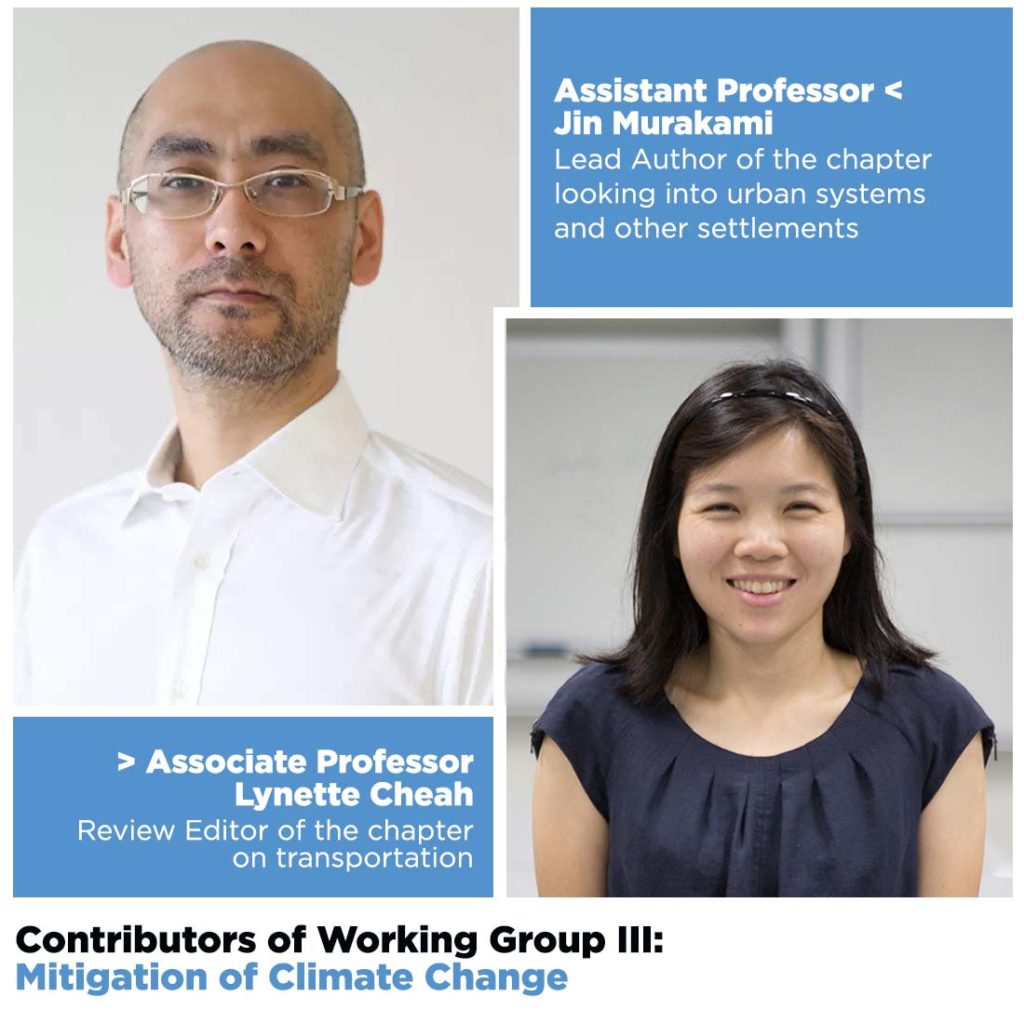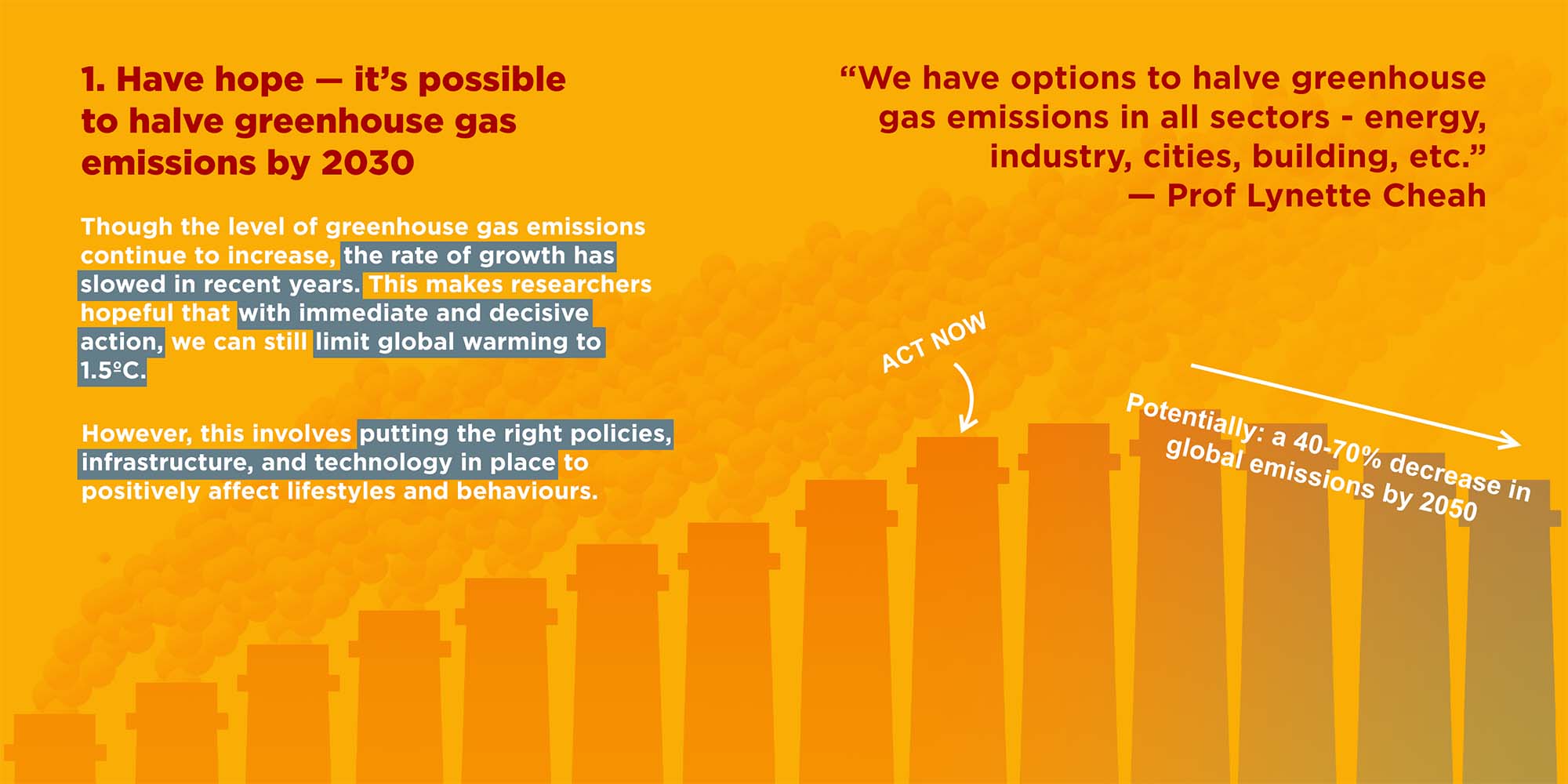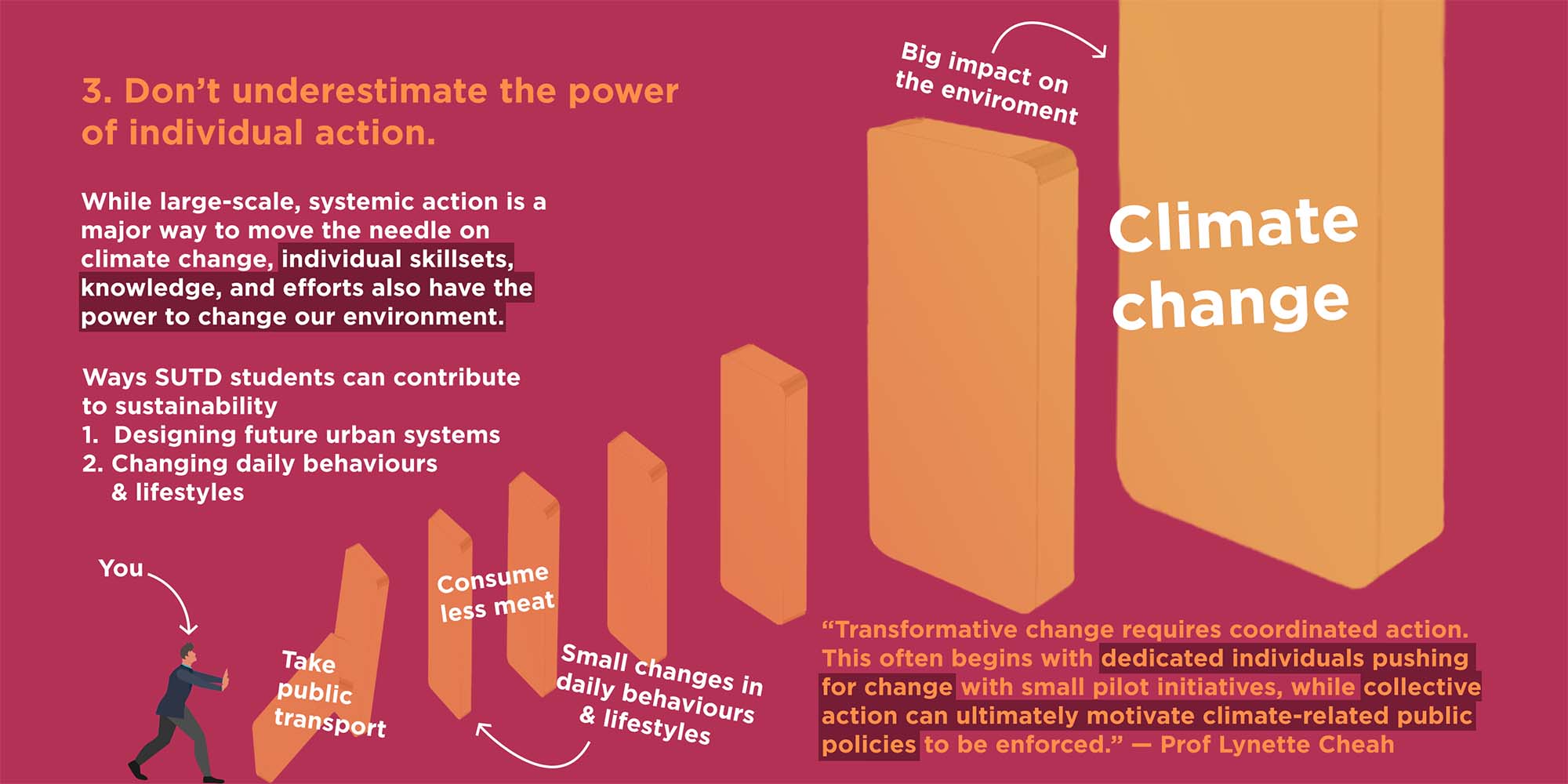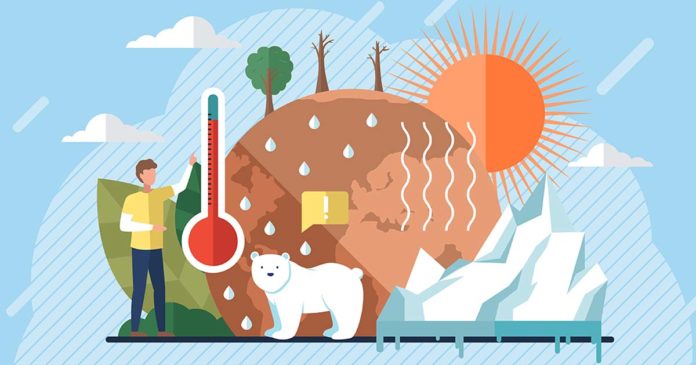Temperature: 33ºC. Feels like: 44ºC. If you too are feeling that it feels extra warm this year, you’re not imagining things: the sweltering heat we’ve been experiencing has been unprecedented. On 1 April 2022, a record high temperature of 36.8ºC was recorded in Admiralty, just shy of the record high of 37ºC recorded in 1983.
You might think that means temperatures have been waxing and waning since almost four decades ago, but data has shown that temperatures are actually on a continually upward climb. When it comes to our climate, anything as little as a fraction of a degree can leave an indelible effect on our natural environment.
But as bleak as the future seems for us on Earth, there’s still hope. In the Intergovernmental Panel on Climate Change (IPCC) Working Group 3’s report—the third and final part of the Sixth Assessment Report (AR6)—scientists, researchers, and industry experts agree that while challenging, it is possible to mitigate climate change, and they also lay out a number of ways in which we can make this work.
 Among the many contributors to the report (Working Group 3’s report alone consists of over 200 authors), two of them are faculty members from SUTD—Assistant Professor Jin Murakami, and Associate Professor Lynette Cheah. We sat down with both professors to pick their brains on key learning points from the massive, almost 3,000 page report. Here are three main takeaways we can all learn from.
Among the many contributors to the report (Working Group 3’s report alone consists of over 200 authors), two of them are faculty members from SUTD—Assistant Professor Jin Murakami, and Associate Professor Lynette Cheah. We sat down with both professors to pick their brains on key learning points from the massive, almost 3,000 page report. Here are three main takeaways we can all learn from.
1. It’s possible to halve greenhouse gas emissions by 2030
 Some of the ways climate mitigation can be achieved include making cities more conducive for walking and cycling, using materials more efficiently in the production chain, and by conserving our natural forests and green areas to serve as a carbon storage bank.
Some of the ways climate mitigation can be achieved include making cities more conducive for walking and cycling, using materials more efficiently in the production chain, and by conserving our natural forests and green areas to serve as a carbon storage bank.
Prof Murakami shared that integrated spatial planning could reduce greenhouse gas emissions by 23–26% by 2050 as compared to the “business-as-usual” scenario, where urban greenhouse gas emissions are driven by the behaviour and consumption patterns of residents, with households accounting for over 60% of carbon emissions globally. “Well-designed urban systems provide a range of options for us as individual consumers to make more sustainable lifestyle choices in terms of our residential location, mobility, choice of energy sources, and the consumption of materials, food, and other resources,” he says.
2. Mitigating options do not come at a great cost.
 Mitigating any problem always comes with its own set of trade-offs. Global economic growth is predicted to be limited by 1.3–2.7% in order to contain global warming to 2ºC. Certain sectors like the oil and gas industry would also see heavier losses than others, but overall, experts say the pros of mitigating climate change far outweigh these cons.
Mitigating any problem always comes with its own set of trade-offs. Global economic growth is predicted to be limited by 1.3–2.7% in order to contain global warming to 2ºC. Certain sectors like the oil and gas industry would also see heavier losses than others, but overall, experts say the pros of mitigating climate change far outweigh these cons.
For starters, employment would be boosted in the environmental and sustainability industries, and a shift to cleaner energy would also enhance public health. Prioritising the protection of our green spaces would also reduce the risks or impacts of natural disasters as they can act as natural buffers.
“Urban mitigation options can be bundled across four sectors of strategies: (1) spatial planning, urban forms, and infrastructure; (2) electrification and net zero emissions resources; (3) urban green and blue infrastructure; and (4) socio-behavioural aspects.”
— Prof Jin Murakami
In terms of the transport sector, Prof Cheah shared that emissions can be reduced by using new technology. For instance, electric vehicles powered by low emissions electricity currently offer the largest decarbonisation potential for land transport, while sustainable biofuels, low emissions hydrogen, and derivatives (including synthetic fuels) can reduce carbon dioxide emissions from shipping, aviation, and heavy-duty land transport.
3. Don’t underestimate the power of individual actions
 Large-scale, systemic action is a major way to move the needle on climate change, but this doesn’t mean that we should discount individual efforts. Yes, our environment is what shapes our actions and behaviours, but with our individual skillsets and knowledge, we also have the power to change our environment.
Large-scale, systemic action is a major way to move the needle on climate change, but this doesn’t mean that we should discount individual efforts. Yes, our environment is what shapes our actions and behaviours, but with our individual skillsets and knowledge, we also have the power to change our environment.
For instance, SUTD students can contribute to sustainability both as specialists by designing future urban systems, and as consumers by changing daily behaviours and lifestyles. This could include making more sustainable choices like consuming less meat, or opting to take public transport whenever possible.
“Transformative change requires coordinated action across different actors, including individuals. In fact, transition pathways and changes in social norms often start with small pilot initiatives led by dedicated individuals. Further, collective action and social organising can motivate climate-related public policies to be enforced.”
— Prof Lynette Cheah
Students can also empower themselves by pursuing further knowledge about climate change and sustainability, in order to make even more informed decisions, and share this knowledge with others. After all, as Prof Murakami shared with us, the social presence of technically-grounded leaders and innovators is vital in meeting global sustainability goals.
But no matter what role we end up playing as individuals in the grand scheme of things, Prof Cheah shared that we can all do our part to advocate for sustainability. As designers, engineers, planners and researchers, we can aim to bring sustainability into our professional practice. As investors, we can choose to divest from fossil fuels and invest in carbon-neutral technologies. Finally, as consumers, we can manage our own consumption and seek happiness with wiser, more sustainable choices.
Assistant Professor Jin Murakami’s research covers the areas of spatial planning, infrastructure investment and finance, and transportation and land use policy. He also teaches courses that cover several practical topics for the sustainability of cities, including climate change and mitigation options, from spatial, financial, and technological viewpoints.
Associate Professor Lynette Cheah’s research examines the environmental impacts of passenger and urban freight transport in cities, as well as urban resource flows. She also teaches courses on urban transportation, sustainability for engineers, and also mentors Capstone design projects.
To read both professors’ contributions to IPCC AR6 Working Group 3’s report, click here.































